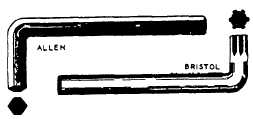(fig. 2-3) is required. This wrench has a curved arm
with a lug or hook on the end. This lug fits into one of
the notches of the nut and the handle is turned to
loosen or tighten the nut. This spanner may be made
for just one particular size of notched nut, or it may
have a hinged arm to adjust it to a range of sizes.
Another type of spanner is the pin spanner. Pin
spanners have a pin in place of a hook. This pin fits
into a hole in the outer part of the nut.
Face pin spanners are designed so the pins fit into
holes in the face of the nut (fig. 2-3).
When you use a spanner wrench, you must ensure
the pins, lugs, or hooks make firm contact with the nut
while the turning force is applied. If this is not done,
damage will result to either personnel, tools, or equip-
ment.
SETSCREW WRENCHES
(ALLEN AND BRISTOL)
In some places it is desirable to use recessed heads
on setscrews and capscrews. The Allen screw is used
extensively on office machines and in machine shops.
The Bristol is used infrequently.
Figure 2-3.—General purpose spanner wrenches.
Recessed head screws usually have a hexshaped
(six-sided) recess. To remove or tighten this type of
screw requires a special wrench that will fit in the
recess. This wrench is called an Allen wrench. Allen
wrenches are made from hexagonal L-shaped bars of
tool steel (fig. 2-4). They range in size up to 3/4 inch.
When using the Allen wrench, make sure you use the
correct size to prevent rounding or spreading the head
of the screw. A snug fit within the recessed head of the
screw is an indication that you have the correct size.
The Bristol wrench is made from round stock. It
is also L-shaped, but one end is fluted to fit the flutes
or little splines in the Bristol setscrew (fig. 2-4).
Figure 2-4.—Allen and Bristol wrenches.
2-3







